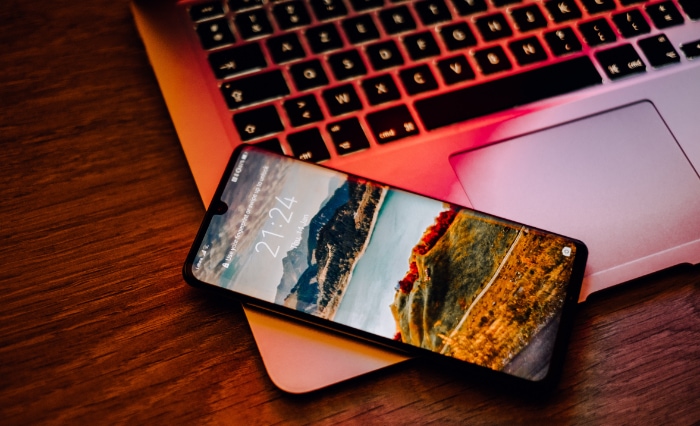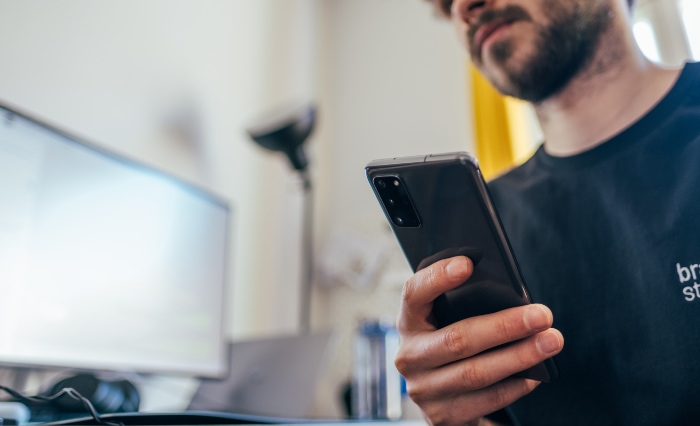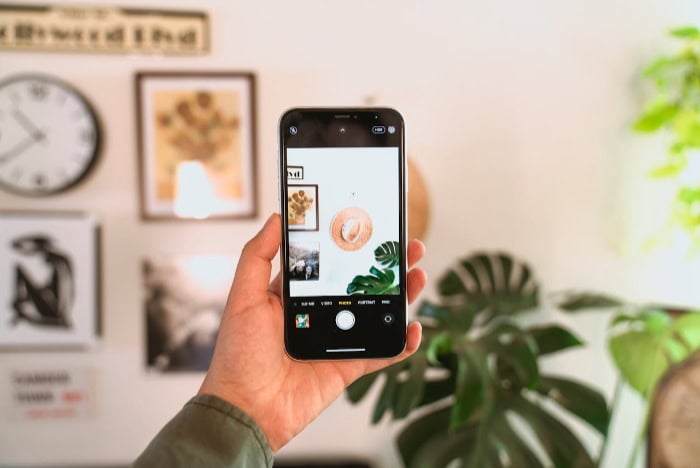Understanding Smartphone Storage: Is 128GB Enough?

Choosing the right storage capacity for your smartphone is more crucial than ever. Our devices have become central to how we capture memories, consume media, and manage daily tasks, making the decision on storage size a vital one.
With options ranging from 64GB to over 512GB, picking the right amount can be daunting. A common choice for many is 128GB, but is it enough for your needs?
User Profiles and Storage Needs
Choosing the right smartphone storage capacity largely depends on how you use your device daily. Different users have varying requirements based on their habits and priorities.
From storing photos to managing large applications, each user category has distinct storage needs that influence the decision-making process.
Casual Users
For those who use their smartphones primarily for basic functions like calling, texting, and occasional web browsing, the storage requirements are generally moderate.
Casual users often download popular social media apps such as Instagram, WhatsApp, and TikTok, and occasionally take photos and videos.
On average, these users might store a few hundred photos and a handful of short videos, which don’t demand a significant amount of space.
Additionally, with many music and video streaming services available, the need to store large media files locally has been reduced.
For casual users, 128GB can provide ample space to comfortably house their essentials without the constant worry of running out of storage.
Power Users
Power users, on the other hand, push their devices to the limits. They frequently download and update large applications, including high-performance games and professional software.
These users also capture high-resolution photos and videos, often in 4K quality, which consumes a considerable amount of storage space.
Furthermore, power users might use their phones for creative work such as video editing or graphic design, which requires storing extensive project files.
For those who regularly indulge in such activities, considering a storage option larger than 128GB might be beneficial to avoid performance bottlenecks and storage constraints.
Business and Professional Use
Professionals and business users rely heavily on their smartphones for productivity and efficiency. This group typically requires numerous productivity apps, email clients, and document management systems.
Their storage needs are further amplified by the necessity to store large volumes of documents, spreadsheets, and presentations that might be accessed or edited on the go.
Additionally, professionals often need to keep backups of important files directly on their devices as a safeguard against unexpected connectivity issues with cloud services.
While 128GB might suffice for users with moderate needs, those handling substantial amounts of data and frequent app usage could find greater benefit in opting for higher storage capacities to ensure seamless workflow and reliability.
Media and App Storage Considerations

Managing storage on a smartphone involves carefully balancing media and app usage, which can quickly consume available space. As users capture moments and download apps, understanding the average file sizes and how they affect storage is crucial in maintaining an efficient device.
Photo and Video Storage
Capturing photos and videos is one of the most common uses of smartphones today. With increasing camera resolutions, a single photo can easily take up several megabytes, while video files, especially those shot in 4K, can require several gigabytes of storage.
For instance, a high-resolution photo might use between 3 to 5 megabytes, whereas a minute of 4K video can consume about 375 megabytes.
If you regularly take photos or record videos, these files can quickly accumulate and occupy significant storage space.
Users who cherish their memories and wish to keep their media library on the go should be mindful of their storage capacity, especially when opting for a 128GB device.
App Sizes and Usage
Applications are another major factor that influences storage decisions. Popular social media, productivity, and gaming apps are continually updated with new features, often increasing their size.
A typical social media app can weigh around 200 megabytes, while complex games may exceed several gigabytes. Additionally, as apps are used, they generate cache and data files, which further consume storage.
Regular updates can also add to the app size, making storage management crucial. Choosing a storage capacity that accommodates both current and future app needs is essential for users who frequently download apps or require multiple apps for work or leisure.
Music and Streaming Services
The way we listen to music and watch videos has evolved with streaming services that provide vast libraries at our fingertips. Many users prefer streaming content directly, reducing the need for large music or video files to be stored locally.
However, for those who prefer offline access, especially during travel or in areas with poor connectivity, downloading favorite playlists or movies is essential.
Depending on the quality and duration, music files might range from 3 to 10 megabytes per song, while a full-length movie can require several gigabytes at higher qualities.
Deciding between streaming or storing files locally can significantly impact your storage choice and overall smartphone experience.
Comparing Storage Options

Choosing the right storage capacity for your smartphone involves weighing various options, each with its benefits and potential drawbacks. Analyzing how different storage capacities fit within your budget and usage patterns can help ensure your device meets your needs efficiently.
Advantages of 128GB
A 128GB smartphone strikes a practical balance for many users, offering a versatile amount of storage without breaking the bank.
This capacity is sufficient for storing thousands of photos, several hours of high-definition video, and a wide array of apps, making it ideal for users who engage in moderate media consumption and app usage.
Additionally, with the flexibility to handle everyday tasks and occasional heavy use, 128GB provides peace of mind for those who want to avoid frequent worries about running out of space.
The cost-effectiveness of this option also makes it attractive to budget-conscious consumers seeking good value for their investment.
Higher Capacity Alternatives
Opting for higher storage capacities, such as 256GB or more, benefits users who require ample space for extensive media collections or professional applications.
These larger capacities are well-suited to power users who frequently download large games, store entire video libraries, or work with data-intensive apps.
High-resolution photo and video enthusiasts, along with creative professionals, will appreciate the extra room to save their work without compromising quality.
While these options come at a premium, the long-term convenience of not needing to constantly manage storage is a significant advantage for heavy smartphone users.
Lower Capacity Options
For users whose needs are more straightforward, a 64GB device might be sufficient and cost-effective.
Those who primarily use their phone for basic functions like calling, texting, and occasional social media can find 64GB adequate for their limited app installs and minimal media storage.
This option is particularly attractive for budget-minded individuals or those who rely heavily on cloud services for their storage needs.
While it may require more diligent management of apps and media files, the cost savings can be worthwhile for users with a minimalist approach to smartphone use.
Managing Storage Effectively

Efficient storage management can significantly enhance your smartphone experience, helping to avoid clutter and maintain optimal performance. By leveraging cloud services, utilizing external storage options, and practicing regular maintenance, users can maximize their device’s potential.
Cloud Storage Solutions
Cloud storage offers a convenient way to extend your smartphone’s capacity without needing physical upgrades. Services like iCloud, Google Drive, or Dropbox provide seamless integration for storing photos, videos, documents, and more.
By syncing your data to the cloud, you free up valuable internal storage space, allowing you to keep your device running smoothly. Cloud storage also offers the added benefit of data backup, safeguarding your files against accidental loss.
Users can access their files from any internet-connected device, ensuring that important documents and cherished memories are always within reach. For those concerned about surpassing their physical storage limits, utilizing cloud services can be an effective solution.
Storage Management Tips
Periodic maintenance of your device’s storage can prevent unnecessary strain on its capacity. Regularly reviewing and deleting unused apps is a simple yet effective way to reclaim space.
Many apps, especially games and large multimedia tools, occupy significant storage even when not in active use. Additionally, removing duplicate photos, blurry shots, or redundant files can help streamline your media library.
Clearing app caches and temporary files is another routine practice that can free up additional space. By setting aside time to declutter, users can maintain a tidy device that performs efficiently and remains responsive to new downloads and updates.
Utilizing External Storage
In some smartphone models, particularly those with an expandable storage feature, microSD cards offer a practical way to boost capacity. These cards can be easily inserted into compatible devices, providing extra space for apps, photographs, videos, and music.
This option is particularly appealing to users who consume large amounts of media or those in need of additional space for work-related files.
While not all smartphones support external storage, for those that do, it presents a cost-effective method to expand your storage without upgrading to a higher-capacity device.
Long-term Considerations

When selecting a smartphone storage capacity, it’s important to think beyond immediate needs and consider how your choice will hold up over time. Two major factors to weigh are the impact of future software updates and the potential resale value of your device.
Future-proofing Your Device
Smartphones are regularly updated with new software that can enhance functionality but also demand more from your device’s resources. As operating systems evolve, they often require additional storage space to accommodate new features, security updates, and application improvements.
This can gradually reduce the available storage on your device, leading to potential constraints if your initial capacity was barely sufficient.
Opting for a larger storage capacity can offer a buffer against these increasing demands, ensuring that your device remains functional and efficient throughout its lifespan.
Future-proofing your device with adequate storage can save you from the hassle of frequent data management and allow you to enjoy new technological advancements without compromise.
Resale Value Implications
Storage capacity can significantly affect the resale value of your smartphone. Devices with higher storage often retain more value in the second-hand market because they offer greater versatility and convenience to potential buyers.
As consumers continue to demand more from their devices, having ample storage becomes an attractive feature that can distinguish your phone in a competitive market.
Investing in a device with higher storage not only enhances your current experience but can also yield better returns if you decide to upgrade to a newer model later on.
When planning for the future, considering resale value can be a strategic move that benefits both your current usage and future opportunities.
Conclusion
Selecting the right smartphone storage capacity involves considering various aspects of personal use and future needs. For many, 128GB strikes an ideal balance, accommodating a mix of apps, photos, and media without excessive cost.
However, specific user requirements, such as those of power users or professionals, might necessitate exploring higher capacities to ensure seamless functionality and long-term satisfaction.
Managing storage effectively through cloud solutions and regular maintenance can also enhance your device experience.
Additionally, considering the potential resale value of a device with greater storage can be a practical financial decision.
Ultimately, assessing your current habits and anticipating future demands will guide you toward a choice that supports your lifestyle and maximizes the utility of your smartphone.


